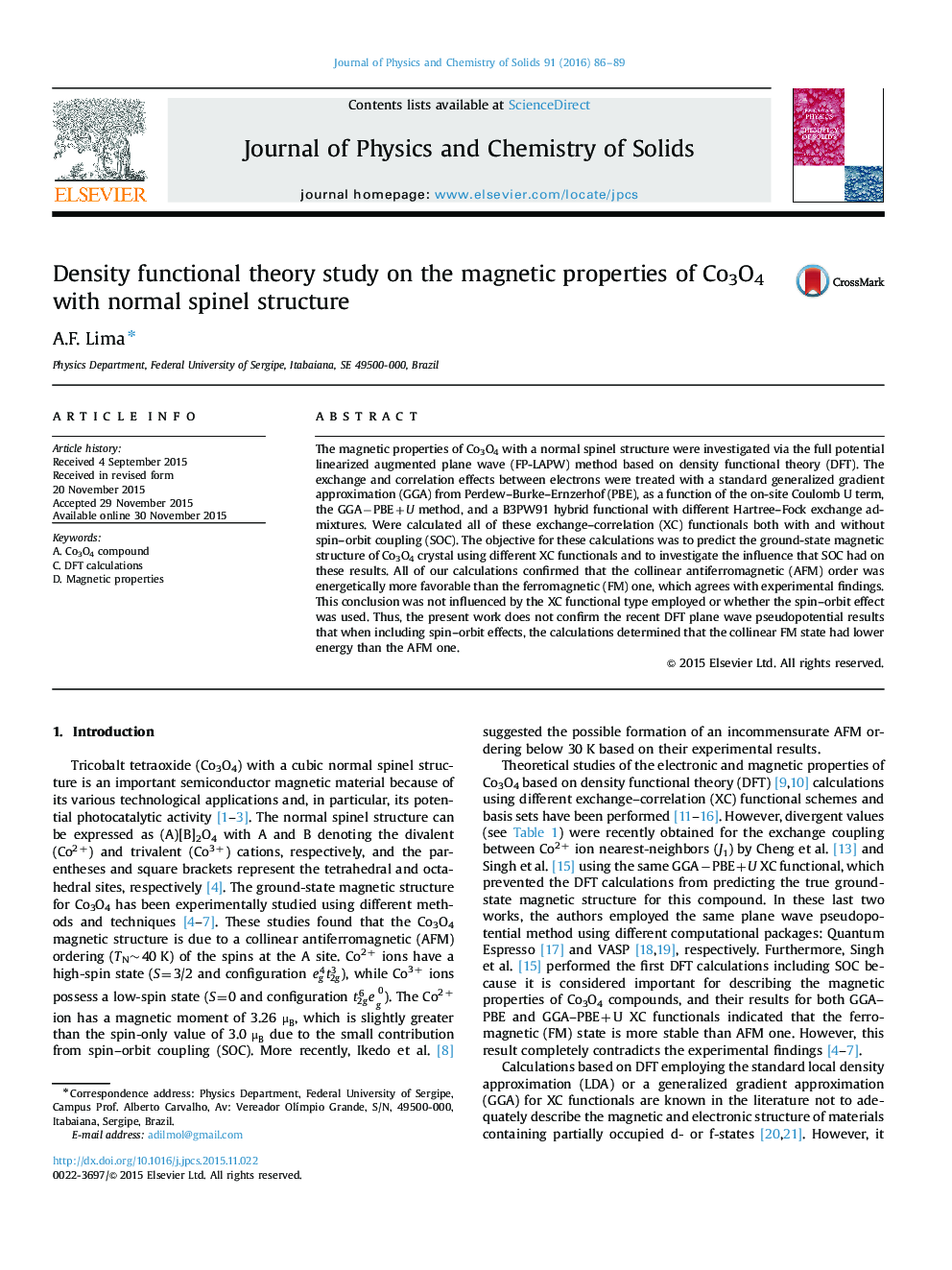| Article ID | Journal | Published Year | Pages | File Type |
|---|---|---|---|---|
| 1515348 | Journal of Physics and Chemistry of Solids | 2016 | 4 Pages |
•DFT calculations were used to obtain the magnetic properties of Co3O4.•FP-LAPW method and different exchange–correlation functionals were employed.•The influence of spin–orbit coupling on the magnetic properties was investigated.•Collinear antiferromagnetic order was energetically more favorable.•This result agrees with experimental findings.
The magnetic properties of Co3O4 with a normal spinel structure were investigated via the full potential linearized augmented plane wave (FP-LAPW) method based on density functional theory (DFT). The exchange and correlation effects between electrons were treated with a standard generalized gradient approximation (GGA) from Perdew–Burke–Ernzerhof (PBE), as a function of the on-site Coulomb U term, the GGA−PBE+U method, and a B3PW91 hybrid functional with different Hartree–Fock exchange admixtures. Were calculated all of these exchange–correlation (XC) functionals both with and without spin–orbit coupling (SOC). The objective for these calculations was to predict the ground-state magnetic structure of Co3O4 crystal using different XC functionals and to investigate the influence that SOC had on these results. All of our calculations confirmed that the collinear antiferromagnetic (AFM) order was energetically more favorable than the ferromagnetic (FM) one, which agrees with experimental findings. This conclusion was not influenced by the XC functional type employed or whether the spin–orbit effect was used. Thus, the present work does not confirm the recent DFT plane wave pseudopotential results that when including spin–orbit effects, the calculations determined that the collinear FM state had lower energy than the AFM one.
